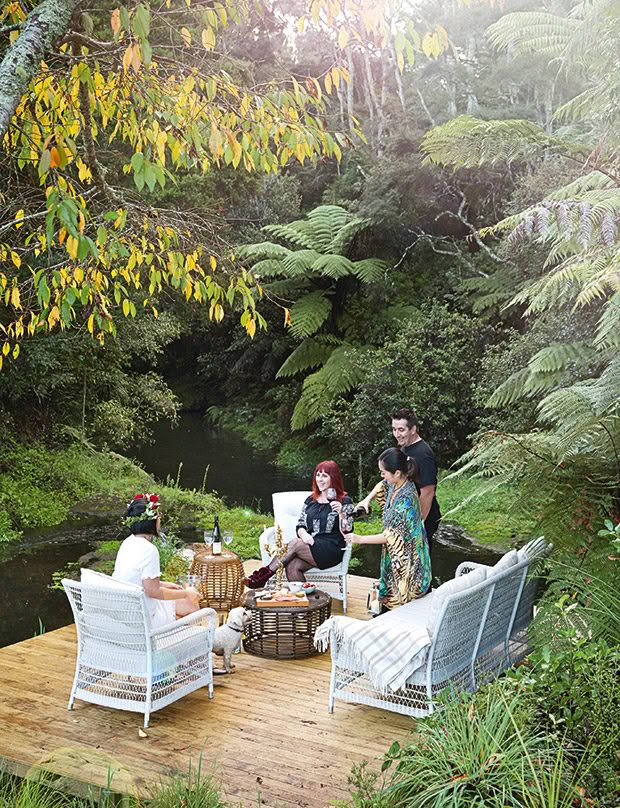10+ tips and tricks to creating a great outdoor space
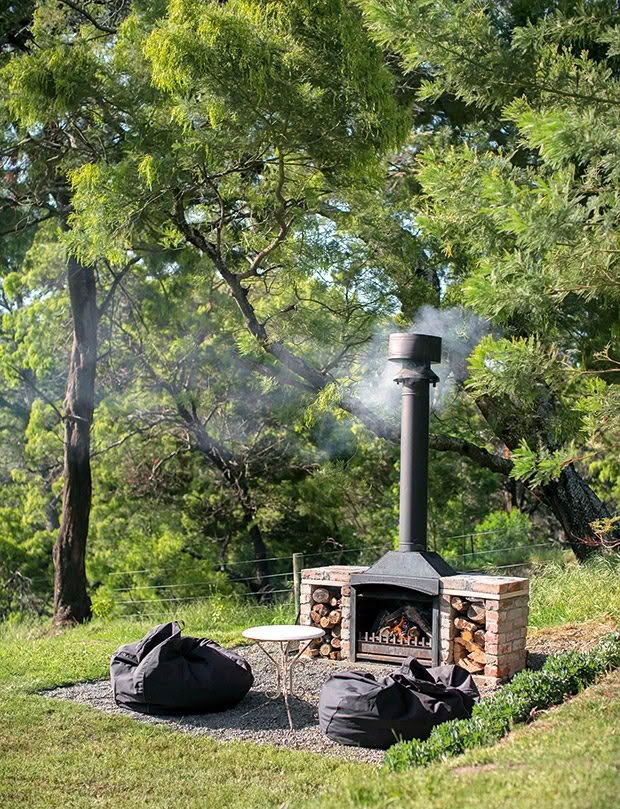
Words: Nadene Hall
The newest ‘room’ of your house could be right outside your door. Here’s what to think about when you’re creating the ultimate outdoor space.
Outdoor areas are often an extension of the home. That’s reflected in the options that are proving most popular with homeowners in the last two years, according to a survey of professional landscapers by the American Society of Landscape Architects.
1. How you want to use the space
You may have one use or multiple uses for your area:
•barbecuing, roasting, baking, or full meal preparation;
•watching TV or movies, or listening to music;
•formal dinners, entertaining;
•other activities such as yoga, workout space, play area for children;
•relaxing in a spa, outdoor tub, or shower.
2. The design elements you like
Think about the furniture and other elements you want to include:
•seating, eg sofas, lounge chairs, dining chairs, hammock;
•heating, eg fireplace, fire pit, fire table, heater, stand-alone burner;
•flooring or other ground covers, eg wood, paving, pebbles, lawn;
•overhead shade or roof, eg pergola, shade sail, full roof;
•water feature;
•wiring for lights, a tv, and outdoor appliances such as a fridge.
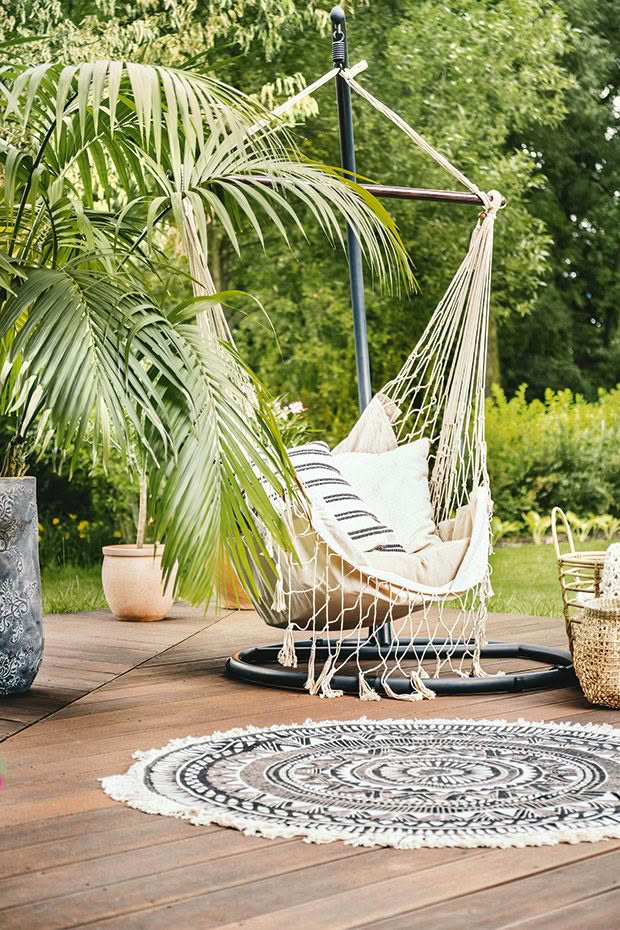
The first thing to do is to pick a focal point before you make any other design decisions.
3. The natural elements
The natural features of your site will affect what you can do. You need to know:
•the predominant wind direction;
•the angles of the sun through the day;
•what drainage is required;
•the slope of the area;
•the possible impact on trees and plants.
4. When you start designing, do this first:
Choose a focal point before you make any other design decisions. It might be something already in place, eg a feature tree or a pool, or something you create, eg a new fireplace or cooking area.
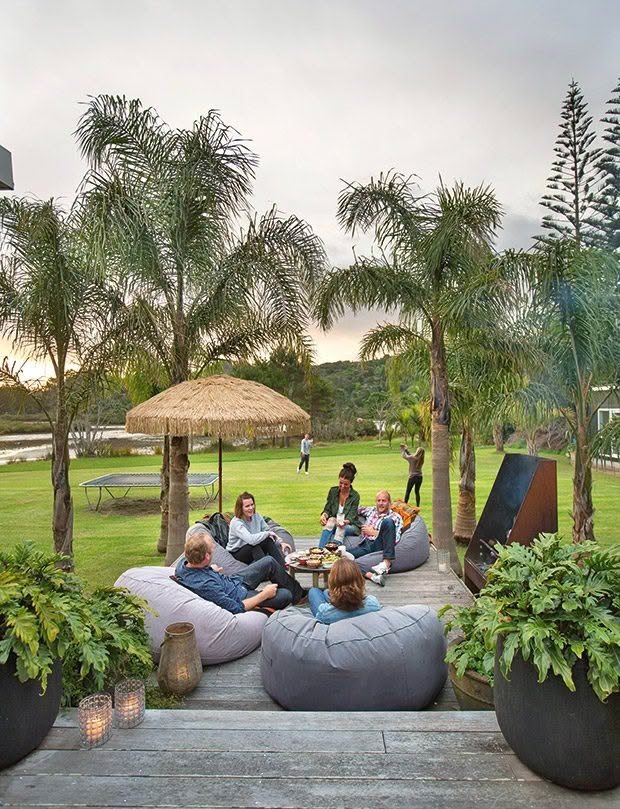
5. Get the size right
Get a long measuring tape and map out the space you think you want. Take the tape with you to other people’s homes and measure areas you like to get an idea of what you want.
If you have specific furniture in mind, get those dimensions and map them out in your test space too. It’s disappointing to buy the outdoor furniture of your dreams, only to find it’s too big or too small for the space.
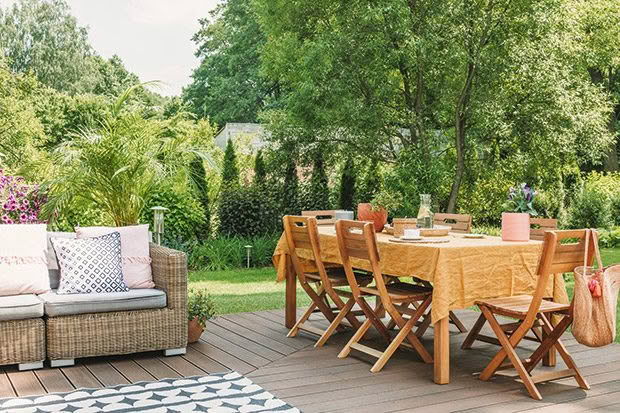
Think about the different ways you may want to use an outdoor space.
6. Don’t forget the infrastructure
Think about lighting, plumbing, gas lines, cabling, and electrics before you start. These are often hidden underneath decks or paving, making it much more costly to change or add after the fact.
If you can’t budget in everything on your wishlist, run the cables or pipes anyway. It will save you (or a future homeowner) a lot of time and money. If you’re not sure what you want, consider running conduit pipes or plumbing so you don’t have to do it retrospectively.
7. The weight of water
Whatever an outdoor bathtub or spa pool is sitting on will need to be strong enough to bear its weight. The weight of the tub or spa, the water, and a person/people all quickly adds up.
A spa pool alone may be several hundred kilograms without water or people; once full, some can weigh over 2000kg.

Bonus tip: You may need a building consent to comply with council regulations regarding new decks, pools, and tubs. Always check with your local council to see what your obligations are under the Building Act.
If you want it to sit on your deck, the frame and decking may need reinforcing, and it’s important to talk to an engineer to get it right. If it’s sitting on the ground, it will need a solid, level foundation, such as concrete.
Consider where the water will go after you finish bathing, so it doesn’t undermine a tub or deck’s foundation, run under your home or other buildings, or swamp part of the garden. Options include drainage to disperse it over a wide area or a soak pit.
8. Fire it up
An outdoor fireplace is one of the most dramatic additions you can make to an outdoor space, and it’s often the focal point.
You can choose from options including:
•wood-burning fireplace;
•gas-burning fireplace;
•gas-burning fire table (which do double duty as proper tables when not lit);
•wood-burning fire pit;
•gas-burning fire pit.
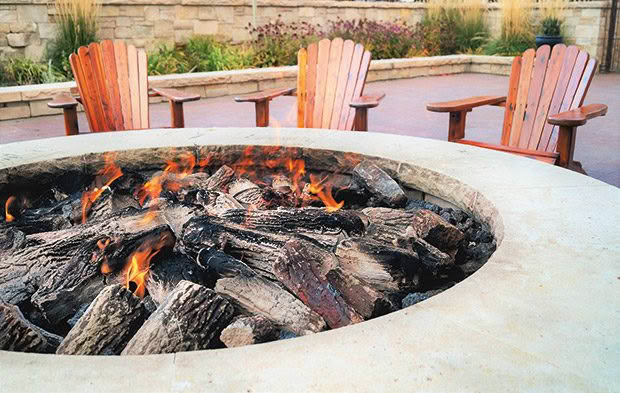
BONUS TIP: You can’t light fire pits or braziers in a prohibited fire season. Check the fire season in your area: www.checkitsalright.nz
A wood-burning fireplace may need to be a certain distance from your house, often inside a concrete or heat-resistant enclosure. It will need a flue to vent gases and may require a hearth. Gas-burning fireplaces don’t need a flue and are easier to install.
Check with your local council for your obligations under the Building Act. Gas-burning fire tables come in a range of sizes, from coffee table up to dining table size. These are used as a regular table, as a heating source, and for cooking. They can be moved to suit your needs, and you can take it with you if you move.
9. Be fire safe
If you’re going to have a wood-burning fireplace, oven, or pizza oven, it’s important to keep clear space around it, preferably 4m above, beside and in front of it.
A flue needs to be a minimum of 1.2m long, with a spark-preventing shield on top. Sit them on a stable, level, non-flammable surface such as concrete, dirt, gravel or a metal tray.
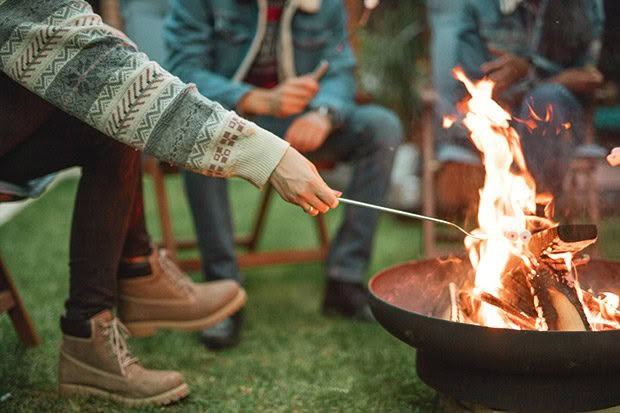
If you want to light a fire pit, bowl or brazier in a restricted fire season in any part of NZ, it must be:
•less than 0.5m² or 80cm diameter;
•at least 3m from buildings, hedges
or anything else combustible;
•within 5m of a hose or other fire extinguisher.
If there’s a prohibited fire season in your region, you can’t use them at all. Only burn clean, dry, untreated wood or charcoal.
10. Up above
During summer, you want to minimise glare, heat, and damaging UV light, while still maintaining airflow.
Shade and shelter can be as simple as an existing tree, trees, umbrella, or a shade sail. Permanent structures include a pergola, retractable awning, or louvred roof that can be adjusted from fully open to completely closed, or anything in between, at the touch of a button.
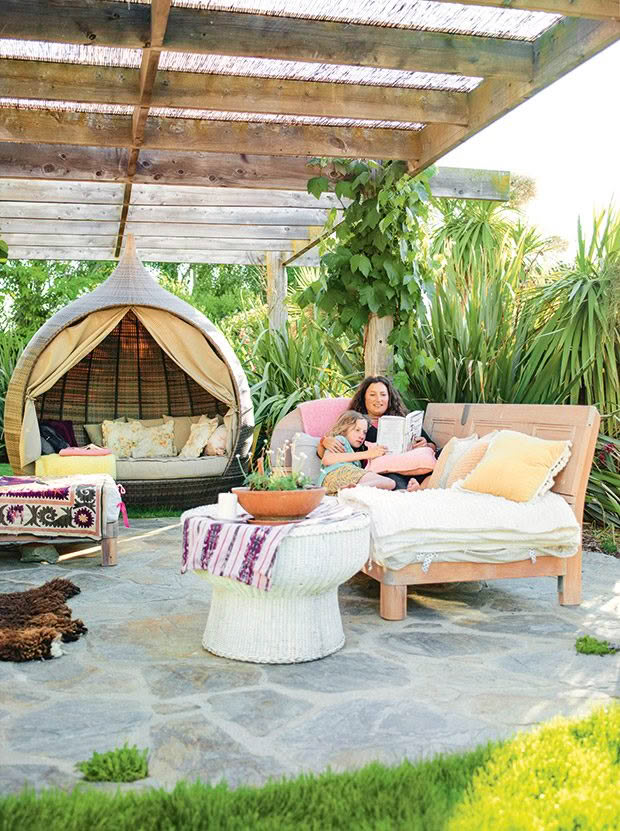
Different textured and styles of seating provides contrast, colour, and a range of options for guests.
The larger the shaded area, the more protection you’ll get from UV light; you want at least 1m of overhang past the area you’ll use.
You may need vertical barriers such as screens, blinds, plants, or a trellis to prevent glare from the sun and nearby reflective surfaces such as a pool or concrete wall, while still allowing good airflow. Ideally, orient shade structures to allow lots of natural ventilation; if that’s not possible, consider plants or structures that can help direct airflow into an outdoor space.
5 style tips for an outdoor room
1. To create a harmonious flow with your home’s interior, use the same paint and colour palettes.
2. Have a mix of different textured furniture, rather than every single piece matching.
3. Consider a combination of different seating, from a table and dining chairs to a formal sofa, lounging chair, and beanbags. It’s a great way to introduce texture and colours, plus it allows guests to choose from varying levels of comfort.
4. Have a selection of throws for when the temperature drops.
5. What kind of lighting do you want? You may want permanent hanging fixtures that will need to be installed by an electrician. Alternatively, you could choose something simple like strings of solar-powered fairy lights.
Top 10 trending outdoor elements
Landscape architects reported the top trends were:
1. Fire pits/ fireplaces – 66%
2. Lighting – 65.4%
3. Seating/dining areas – 64%
4. Outdoor furniture – 59.1%
5. Outdoor kitchens – 58.8%
6. Deck – 53.6%
7. Barbecue – 50%
8. Movie/TV/video theatre, wireless/internet, stereo – 48%
9. Outdoor heaters – 40.5%
10. Pools and spa features – 36.9%
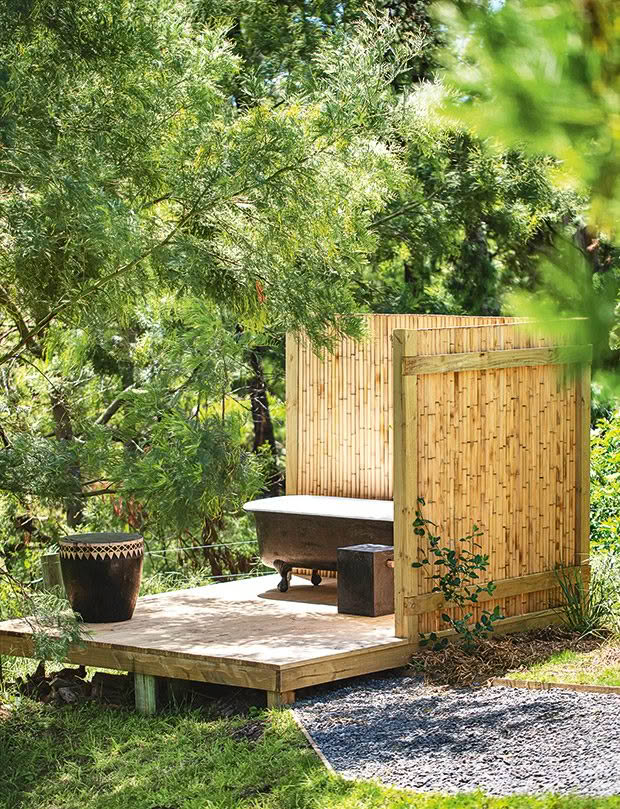
Top 10 sustainable design elements
When it comes to sustainability, the wish list for homeowners was:
1. Native plants – 83.3%
2. Native/adapted drought-tolerant plants – 83%
3. Low-maintenance landscapes – 80%
4. Flexible use space (for yoga classes, movie night, etc.) – 74.2%
5. Permeable paving – 74%
6. Drip/water-efficient irrigation – 72.4%
7. Rain gardens – 71.2%
8. Reduced lawn area – 70.8%
9. Food gardens, eg vegetables, fruit – 70.5%
10. Charging stations for mobile devices – 70%
Love this story? Subscribe now!
 This article first appeared in NZ Lifestyle Block Magazine.
This article first appeared in NZ Lifestyle Block Magazine.
